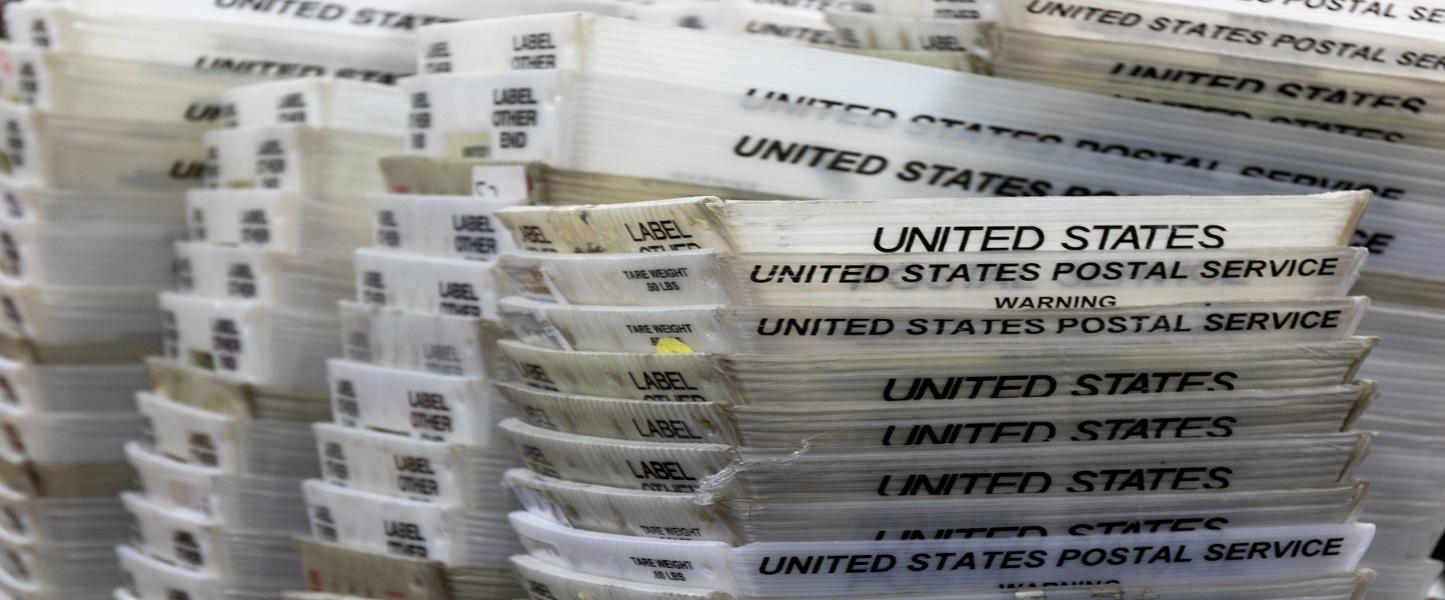Author: Melissa Fransen
In the print industry, like any industry, there are a lot of acronyms and terms that are used and that is why we are here to help! In this blog, we’ll explore common printing postal terms.
Common Printing Postal Terms
Aspect Ratio (Letters only) – The length of the mailer divided by the height. For letter-rate mail this is required or an upcharge in postage will be incurred.
Bulk Mail – This term is generally used to describe commercial, business, or advertising mail. First-Class Mail presort requires a minimum of 500 pieces for each mailing. USPS Marketing Mail (previously Standard Mail) requires 200 pieces or 50 pounds for each mailing to qualify for presort discounts.
Business Mail Entry Unit (BMEU) – The area of or individual postal facility where mailers present commercial and permit mail for acceptance.
Carrier Route Mail – The routes where individual USPS carriers deliver mail. They are much smaller than ZIP Codes, with roughly fifteen Carrier Routes per postal ZIP Code. They are useful in helping to reduce direct mail marketing costs while increasing response rates.
CoMailing (Flats only) – Is the process of merging individual mail pieces from multiple mailing streams into a single mailing stream. This process improves the USPS delivery sortation characteristics of the total mailing which reduces postage and the number of times mail pieces are handled within the USPS.
Commingling (Letters only) – Is a process by which mailings from more than one company are combined to meet USPS discount minimums for quantity for mailings to NDC/SCF locations. Sorting the mail by zip code in much larger volumes reduces postage.
Flat – This term is used to describe large envelopes, newsletters, or catalogs. Flats must have one dimension that is greater than 6 1/8” high or 11 ½” long or ¼ inch thick. Aspect Ratio does not apply.
Indicia/Mailing Permit – Imprinted designation on mail piece that denotes postage payment (e.g., permit imprint). Minimum size of ½ x ½”. A printed indicia, instead of an adhesive postage stamp or meter stamp that shows postage prepayment by an authorized mailer.
Intelligent Mail barcode (IMb) – Is used to sort and track letters and flats. It allows mailers to use a single barcode to participate in multiple Postal Service programs simultaneously and assists in the tracking of individual mail pieces.
Letter-Rate – This is the rate charged to what the USPS determines to be letter sized pieces. Here is a link to a USPS rate chart for easy reference to letter rate criteria and more.
NCOA National Change of Address – Is a USPS service that makes available current change of address information that can help reduce your undeliverable mail.
Network Distribution Center (NDC) – The NDC network consists of strategically located automated facilities that serve as centralized mail processing and transfer points for designated geographic areas, including Area Distribution Centers (ADCs), Sectional Center Facilities (SCFs), and auxiliary service facilities (ASFs).
Non-Machinable Mail – First-Class Mail letters, that are nonmachinable, USPS Marketing Mail letters that are square, rigid or have one or more nonmachinable characteristics are subject to the nonmachinable surcharge.
Examples of a nonmachinable letter include:
- It has an aspect ratio (length divided by height) of less than 1.3 or more than 2.5 (a square envelope has an aspect ratio of 1, making it nonmachinable).
- It is more than 4-1/4 inches high or more than 6 inches long and is less than 0.009 inch thick.
- It has clasps, strings, buttons, or similar closure devices.
- It is too rigid.
- It has a delivery address parallel to the shorter side of the mailpiece.
- It contains items such as pens, pencils, or keys that create an uneven thickness.
Letters with non-paper surfaces, other than envelope windows or attachments that are allowed under eligibility standards by class of mail.
Presorted Mail – A form of mail preparation, required to bypass certain postal operations, in which the mailer groups pieces in a mailing by ZIP Code or by carrier route or carrier walk, qualifying for automation rates. Presorted First-Class Mail is a nonautomation category for a mailing that consists of at least 500 addressed mail pieces.
Sectional Center Facility (SCF) – This is where mail is combined with other mail geographically by zip code prefixes so it can travel to a larger regional facility called a NDC (Network Distribution Center). (Travels from a NDC to the SCF then to the local facility for delivery).
Sortation – To separate mail by a scheme or ZIP Code range; to separate and place mail into a carrier case; to distribute mail by piece, package, bundle, sack, or pouch, for distribution to its final delivery point.
USPS Tracking – An extra service (for example, TrackMyMail) purchased by mailers to have their mail piece scanned to record the final scan from the SCF to the local facility for delivery. Extra services fees are in addition to postage.
Walk Sequence – This is where the mail is provided in the exact order (in the line of travel that the carrier delivers in his/her route) in which it is to be delivered so the carrier does not need to sort the mail, resulting in time and cost savings for the USPS.
Nahan is Here to Help!
Questions? Our friendly Sales Team is always here to help with unfamiliar terms and to guide you along the way! Contact us any time.
Bio: Melissa Fransen is our Marketing Manager. She started with Nahan in May of 2017. Melissa is responsible for Nahan’s marketing initiatives, which includes everything from conference planning to social media initiatives. In her spare time, Melissa enjoys spending time with her husband and enjoying time in the outdoors with family and friends.


